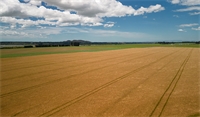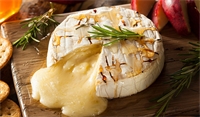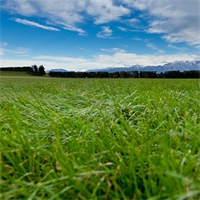14Mar
Tupping and Pregnancy in Ewes
Lambing success starts here
Would you like to know how you can best influence your lambing percentages and achieve a higher twin ratio? Consultant nutritionist, Paul Sharp, explains why pre-tupping management is a critical success factor.
When you think of lambing success, you’ll probably picture healthy ewes with two lambs each, and in good condition. Well, this objective is eminently achievable, starting with pre-tupping management aimed at maximising ovulation rates and increasing in-lamb and multiple rates.
Nutritionally, “It all hinges on the weight and body condition score (BCS) of hoggets and ewes,” explains Paul Sharp, SealesWinslow, Consultant Nutritionist. Ewes that carry some extra body fat and are “flushed” have a much better chance of twin pregnancies and will grow a healthy placenta promoting better foetus survivability.
Look at weight and preferential feeding
“It’s important that weight is monitored regularly in the lead-up to mating,” advises Paul. “Don’t leave it until tupping time to achieve weight gains. By then it’s too late.”
He illustrates the point with an optimum condition ewe in BCS 3; at 60 kg she is about 8 kg heavier than her counterpart at BCS 2. For the lighter ewe to catch up and gain the additional weight it would take 53 days!
That’s why you’ll want to identify these ewes early – ideally by putting your hand on their back to detect marginal differences. “Drafting will only establish the very lightest,” knows Paul. “You would miss the ewes that only need to gain half a BCS, and that’s precisely where your easiest gains are! With preferential feeding, those ewes are the most efficient use of available feed, and deliver the very best return for any purchased supplements.”
For smooth ovulation and reliable pregnancies, ewes need to at least maintain condition, but ideally should be on a rising plane of nutrition. Flushing them prior to mating and for the first 17 days of mating on high quality feed yields optimum results. For hogget’s it’s critical to ensure continued growth in the lead up and during tupping.
Focus on feed
Dietary target
Crude Protein: 10 – 12% minimum 14% for hoggets
ADF: 16% minimum
Energy: 10.5MJ ME / kg DM
|
Both quality and quantity of feed are important considerations, but perhaps never more so than during the first 10 days of pregnancy when feed restriction will, in fact, jeopardise egg survival.
As a rule of thumb, feed allocation should be around 2.5% of LWT in daily intakes – around 1.5 kg DM/day for a 60 kg ewe – making sure that any shortages (in quality or quantity) are addressed with suitable supplements, or crops. It’s also a good idea to test for mineral deficiencies such as iodine and selenium, the latter being vital for cycling and embryo implantation. Seales Winslow’s Lamber Max blocks are an ideal way to boost mineral supplies during this period, as well as improve utilisation of summer feed.
The rewards for optimised feeding are worthwhile: Research[1] shows that you can achieve 6% increase in twinning per 4.5 kg of ewe LWT, increasing in linear fashion to at least 70 kg LWT. Further, heavy ewes maintained in high condition from weaning to tupping show improved reproductive performance with increases in lambing up to 20% being documented. On the other end of the scale, barrenness surges below 45 kg LWT.
In the final analysis, it pays to calculate the value of increased lambing in relation to additional feed cost; taking into account that each additional kg LWT for mature ewes requires 40 – 60 MJ ME, with a weight gain of 150g/day being the upper end.
PAUL’S TUPPING TIPS:
· Use ram harnesses and change colours every 10 days, for more accurate lambing times and better grass allocation
· Avoid tupping in paddocks that were used for intensive lamb finishing as the worm burden can be high (use a testing kit)
· Keep the rams in top health
- Lucerne is suitable for tupping (free of diseases or insect infestations that affect ovulation)
|
Improved Lambing Percentage, KG Geenty, MeatNZ 1989
Related

Making your own DIY couch pillow covers is a fun and rewarding project allowing you to explore new s...
Read More

Look back and plan ahead to get the most from your autumn sown cereal crops.
Read More

Fall into autumn with this delicious Baked Brie recipe. The perfect accompaniment to any gathering o...
Read More

There’s a convenient, cost-effective way to keep your nitrogen investment in the ground for plant u...
Read More

The inclination of farmers to be “tidy Kiwis” by repeatedly spraying the vegetation along fence-li...
Read More

In New Zealand, pasture pests and animal health issues can significantly impact farm productivity. I...
Read More